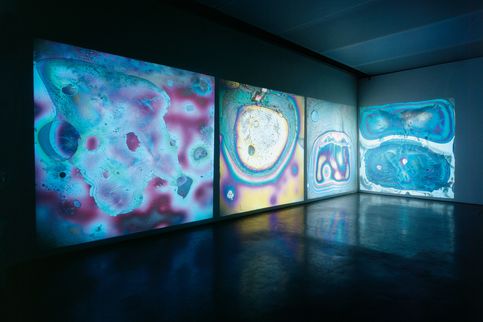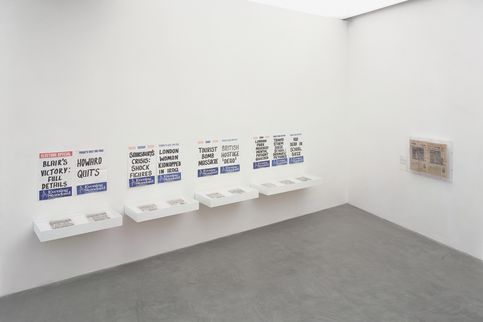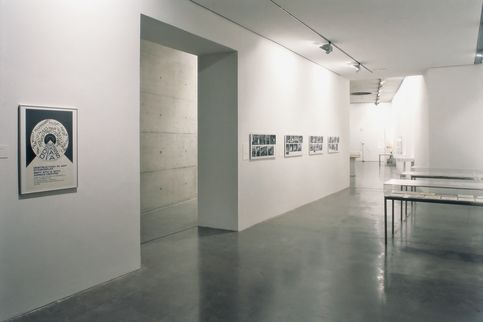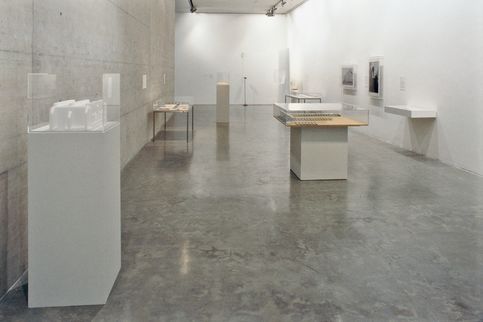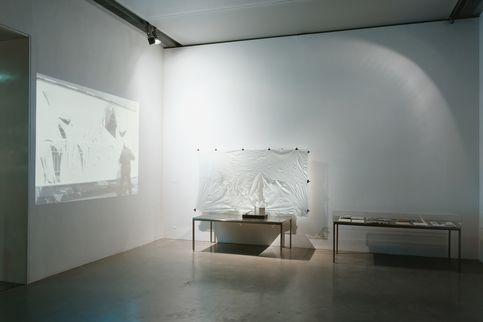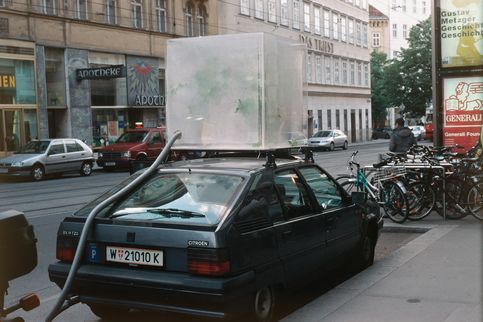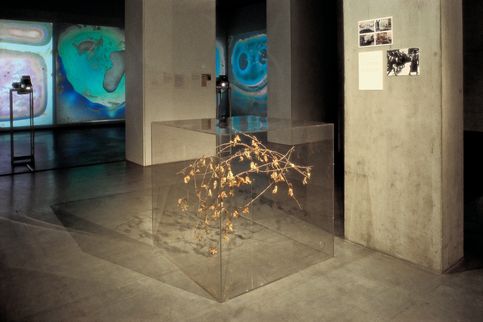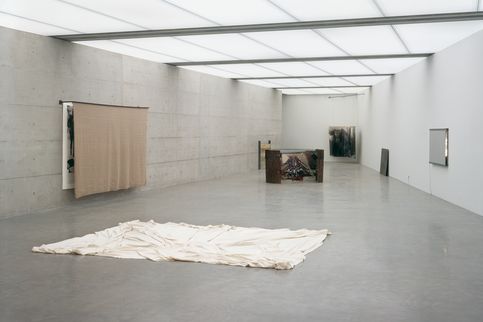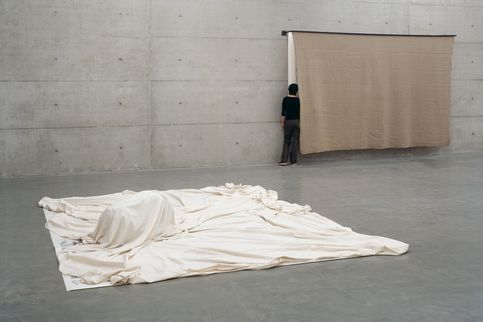Gustav Metzger
History History
Curator: Sabine Breitwieser
Assistant curator, Exhibition production:
Cosima Rainer
In an extensive exhibition, the Generali Foundation showed Gustav Metzger’s importance as an artist and activist from the 1960s to the present.
Gustav Metzger, who was born in Nuremberg, Germany in 1926 lived in London, was an enigmatic figure. He has continually provided important impetus as an artist, and also as an initiator and political activist. This retrospective provided the first opportunity in Austria—and, in this comprehensive form, the first internationally—to encounter his versatile involvement and then largely unknown oeuvre. It extended from the early manifestos and Lecture/Demonstrations to his political engagement, his critique of the art industry, through to the work group of Historic Photographs and his at this time current works with the medium newspaper.
In 1959, political and ecological issues, such as the nuclear arms race and the increasing environmental destruction, influenced Gustav Metzger’s development of his concept of Auto-Destructive Art. In his first manifesto, he defined this as a "form of public art for industrial societies", which thematizes the destructive potential of the 20th century. Transformation processes are at the center of Gustav Metzger’s works: sculptures that fall to pieces or erode, canvases corroded by acid, rubbish in trash bags, or car exhaust in acrylic glass containers. The materials used by Metzger originated exclusively from the industrial context and machine production. Their process-oriented and self-destructive use is meant as an attack on capitalist values and the art market. These processes become visible, among other ways, in his experiments with liquid crystals. His psychedelic Liquid Crystal Projections, which he also presented at a concert of the band The Cream in London, illustrate Metzger’s concept of Auto-Creative Art.
The Destruction in Art Symposium (DIAS), which he initiated in London in 1966, clearly showed that the theme of destruction was also important for other artists of his generation. At this legendary meeting of artists, Metzger enabled the first international appearance of the Viennese Actionists. Additionally, he also influenced the vocabulary of pop culture: Pete Townshend, the famous “guitar trasher” of the rock band The Who, called Metzger his "teacher".
Already in the 1970s, Metzger was concerned with problems of environmental pollution and the progressing development of computer technology. In 1974 he refused to participate in the exhibition Art into Society - Society into Art and instead, in the exhibition catalogue called for a three-year "art strike". In 1981 he organized, together with Cordula Frowein and Klaus Staeck, a counter-exhibition to the show Westkunst in Cologne and protested against the version of contemporary art propagated there. Gustav Metzger was also involved to the same extent as his artistic work in theoretical lectures, symposia, and political forums. Also of importance is his confrontation with nazism, through whose repercussions Metzger lost a large part of his family.
Gustav Metzger was always interested in daily papers and their design as a sign of reality and also a mirror and storage medium for history. In his Historic Photographs, a workgroup that was created in the second half of the 1990s, he asks the question of how we deal with human catastrophes documented in media images. By problematizing the visibility of these images, he lays bare their ambivalent position between voyeurism, trivialization, and sympathy.
